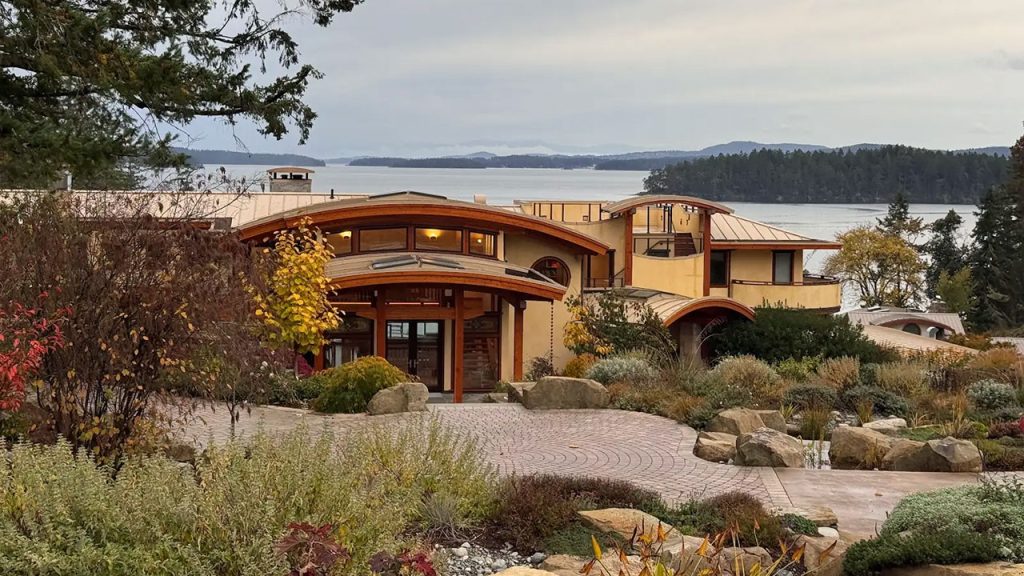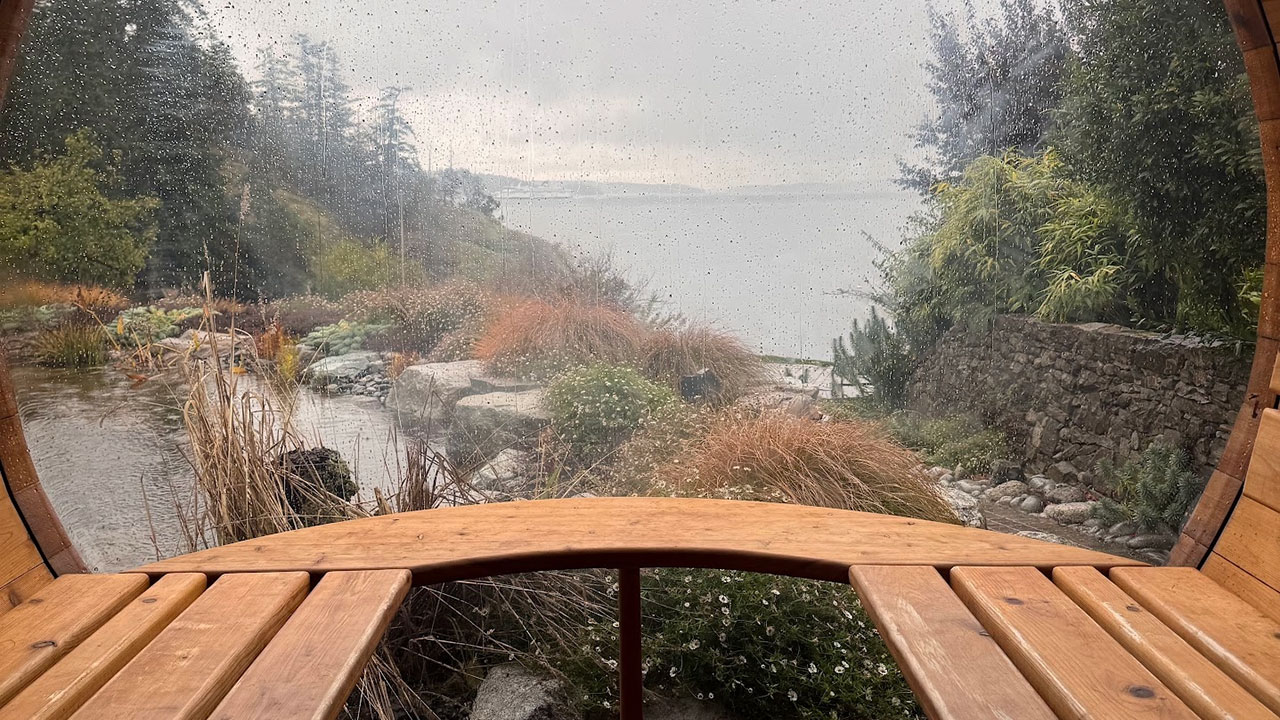
The weekend I travelled to Salt Spring Island with my daughter, the forecast promised relentless rain. Ferries were being cancelled. We debated turning back but decided to take the risk. When the boat finally left the terminal, it felt like a small victory.
After docking in Long Harbour, we drove along winding roads towards the island’s southern tip. The sky was pewter grey. Trees swayed on the sides, their leaves a blur of gold and russet. “It feels like an old English movie,” Sasha said, watching mist curl through the forest. Autumn on Salt Spring can feel cinematic: wild, unpredictable, and quieter than Summer.
Arrival at a Wellness Sanctuary
At the end of the drive, a gate marked the entrance to Lightwater Cove. We opened it and closed it behind us, later learning it keeps the deer out; otherwise, they’d devour the vegetables and herbs growing on the property’s farm, which supplies the onsite breakfasts for guests.
When I stepped into Lightwater, the scent of wellness wafted through the air. Fresh and natural, as if it rose from the land itself. It might have drifted up from the spa below, carrying notes of eucalyptus and other elixirs. The space was so calm yet very much alive.
The fire in the vast atrium greeted us with warmth from our chilly travels. Fir flooring from old-growth forests met shades of gray stone around the hearth, softened by muted blues in the furniture and the shimmer of the sea seen through tall windows overlooking the cove. An expansive staircase led upstairs to the guest rooms and downstairs to a wellness space. The steps were strong, linear, almost masculine, designed open space style. Stained-glass windows salvaged from old Vancouver homes cast soft colour across the floors. Sasha looked around and whispered, “It feels like God made it himself.”
I found myself lowering my voice without thinking.
Greg, who co-founded Lightwater Cove with his wife, Monica, designed and financed the project himself. He isn’t an architect by title, but he designed the buildings and hardscape after years of restoring heritage homes and studying the way structures interact with light. “Light, water, and silence,” he said, “they’re the real architects here.”
In winter, Greg says the property receives more sunlight than other parts of the island as it faces directly south over the ocean. “You can see the Olympic Peninsula, glaciers and ice fields. That’s why we called it Lightwater Cove. The light reflecting off the water has a healing quality.”
Architecture That Restores

The dining room’s stone alcove, built from the same reclaimed stone used throughout Lightwater Cove, holds work by Salt Spring artists. Nearly 100 truckloads were brought to the site and hand-shaped into walls, paths, and fireplaces across the property.
Our room carried the same sense of rich simplicity as the rest of the property. The beds were dressed in linen duvets, the subtlest shade of winter blue, with natural latex mattresses and organic cotton sheets. The effect was soft, clean, and utterly unadorned. No television, no phone, no room service. Instead, the view, the quiet, and the sound of rain.
I slept deeply and woke to the hypnotic pitter-patter of water drops, choosing to gaze out the large, round window instead of my phone. With no blind to pull, I woke on nature’s schedule. Thankfully, the mornings stay dark this time of year. The window felt like one from a ship, perfectly framing the water beyond.
Weather as Teacher
We spent the weekend walking the grounds between powerful and lighter bursts of rain. The paths curved through lavender and ponds bordered by low stone walls that looked as though they’d grown there naturally. At one point, Greg described the property as “a living, breathing spaceship,” sustained by underground water that circulates through ponds and waterfalls. “Guests often say they feel lighter after a few days,” he said. I understood what he meant. There’s comfort in the solidity of the stone walls, in being surrounded by something built to withstand weather.
That night, as the wind gathered force, I lay in bed listening. The fire below continued to crackle steadily. I felt safe, more than physically, but in some deeper way, as if Lightwater itself had absorbed the storm for me.
Fall’s Quiet Reward

Inside the cedar sauna at Lightwater Cove, warmth and wildness meet. As Greg, the co-founder, says, “Light, water, and silence. They’re the real architects here.”
By Sunday, the rain had softened to a drizzle. Outside, raindrops rippled the surface of the covered outdoor pool, where steam rose from the hot tub beside it. The sauna, with its glass end overlooking the ocean, seemed to hold the day’s grey light like a lantern. Watching the rain fall against the windows felt almost symbolic, perhaps something about renewal, about being washed clean.
Later, we walked to the edge of the property where the forest met the sea. Waves folded against the rocks in slow rhythm, and light returned, silver on the water.
Fall might be the best time to visit Salt Spring. The trails and art galleries are still open, but the pace shifts. There’s time to notice the colours, the mist, the sound of rain on cedar. And at Lightwater Cove, that slowing feels intentional.
Greg and Monica are planning future wellness retreats and expanding the farm, but the place already feels complete. “I wanted to build something that would last hundreds of years,” he told me. “Most houses around here were built too close to the water. I wanted this one to listen to the land.”
As we packed to leave, Sasha looked out at the cove and said, “It’s so beautiful, it’s almost unreal.”
Natasha Netschay runs a PR and Communications agency in Vancouver and teaches writing courses at SFU. She also writes wellness articles for travel, yoga and mental health media outlets.
Lightwater Cove Resort is a prominent partner with Wellness Travel BC. Learn more about them at https://wellnesstravelbc.com/partners/lightwater-cove/.
